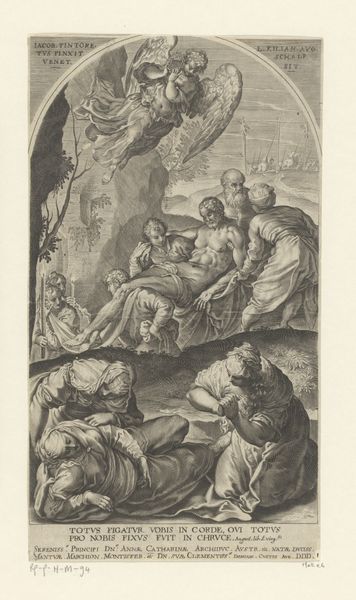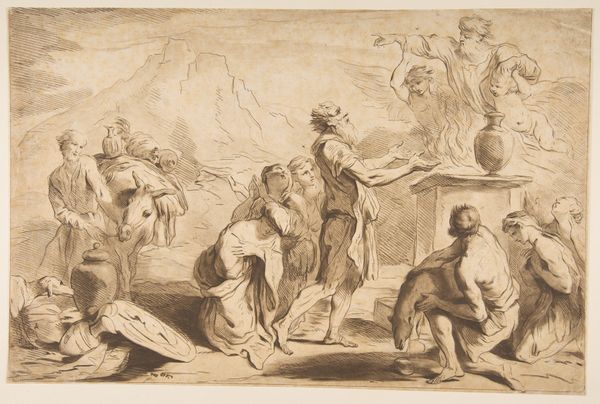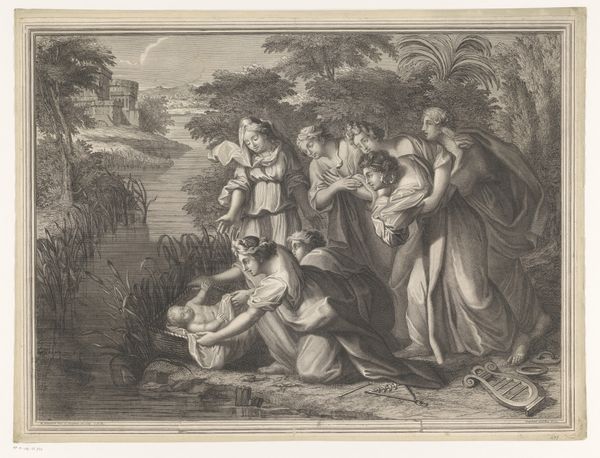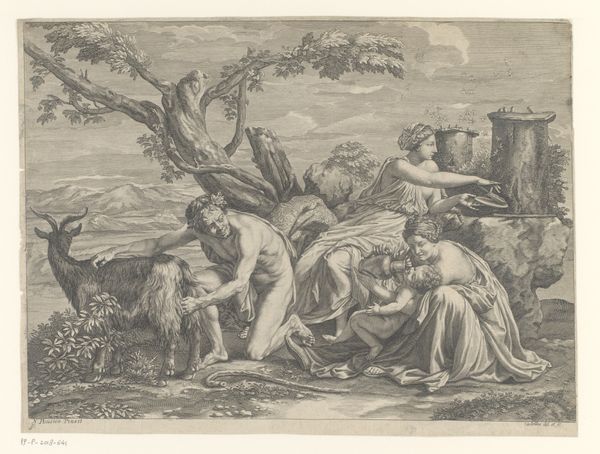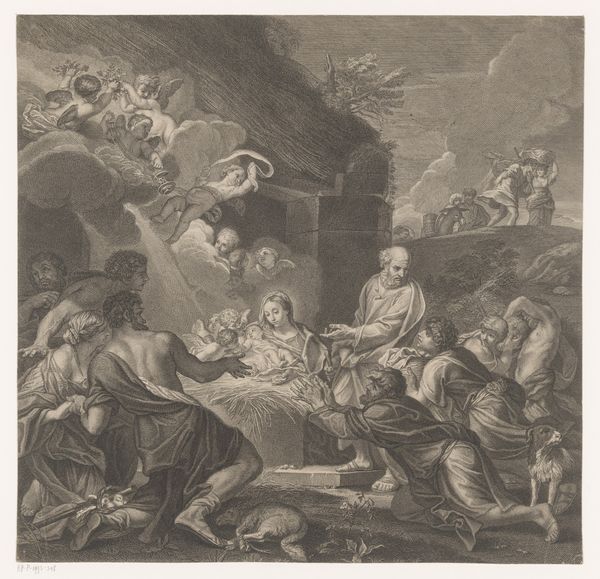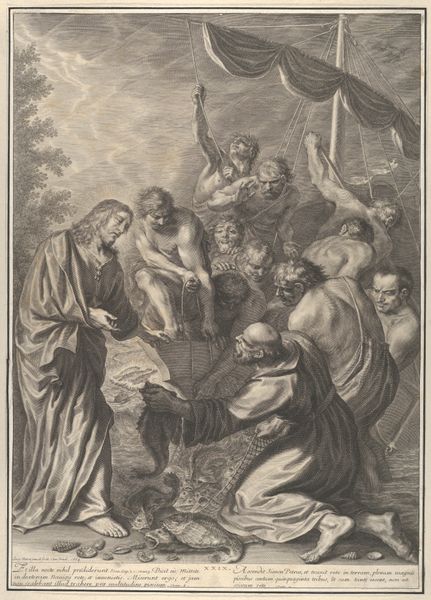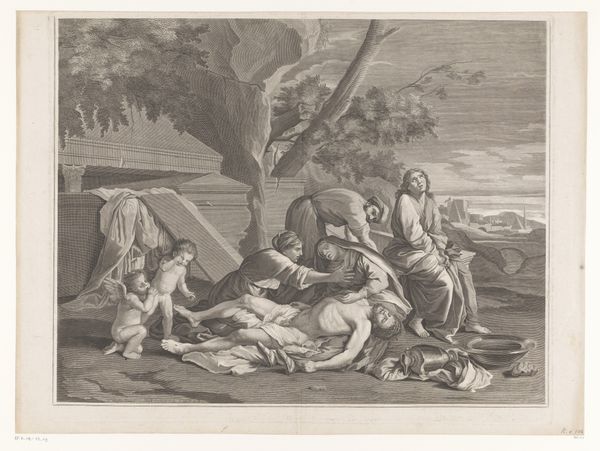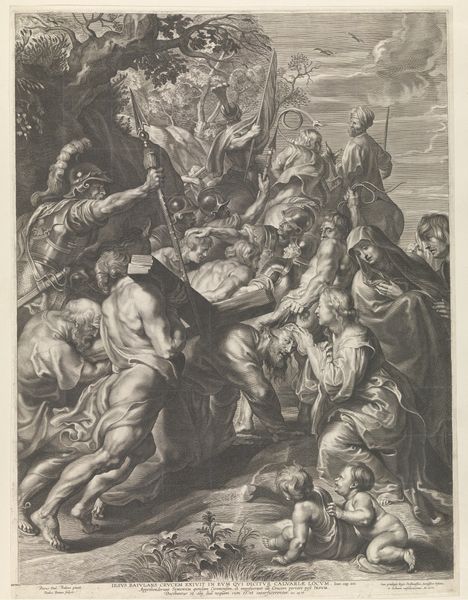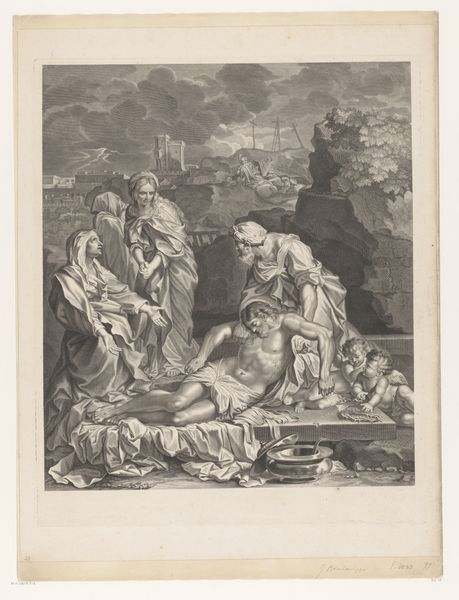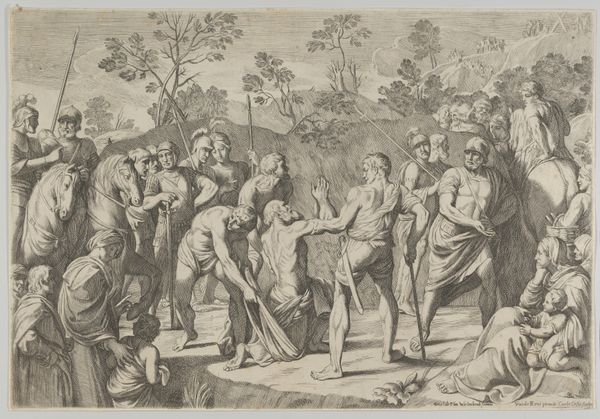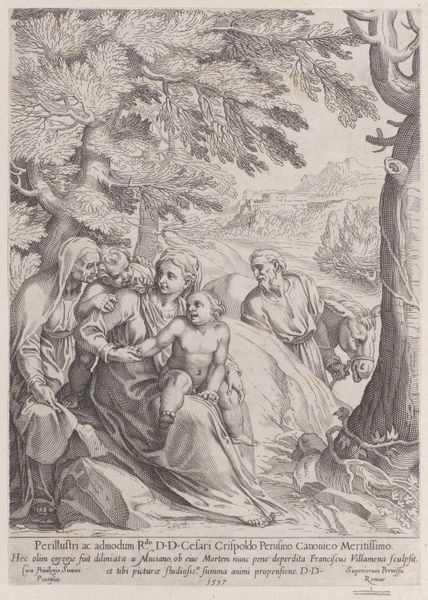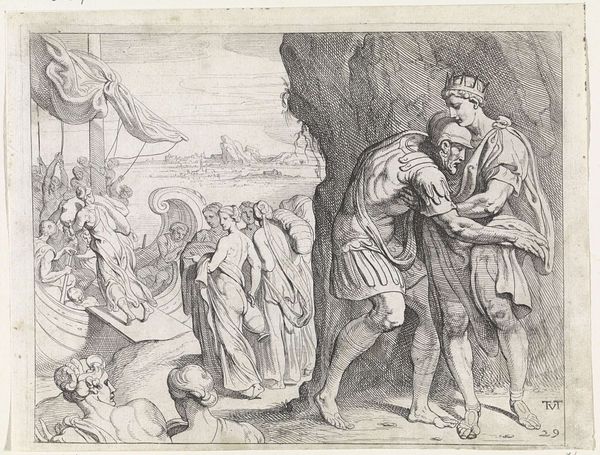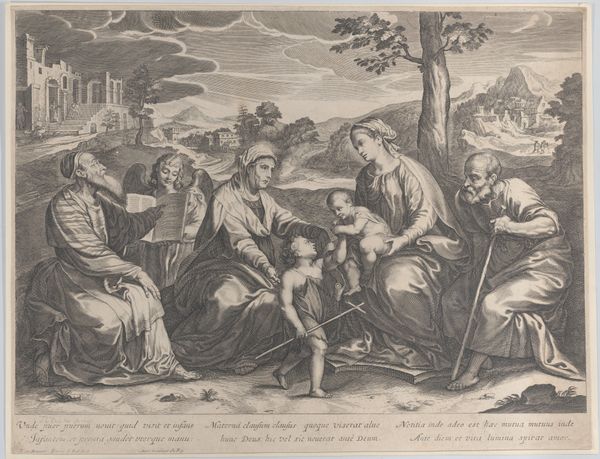
print, etching, charcoal, engraving
#
narrative-art
#
baroque
# print
#
etching
#
charcoal drawing
#
figuration
#
pencil drawing
#
surrealism
#
line
#
charcoal
#
history-painting
#
italian-renaissance
#
engraving
Dimensions: height 525 mm, width 650 mm
Copyright: Rijks Museum: Open Domain
Editor: So, this is Daniel Le Bossu's "Opwekking van Lazarus," dating somewhere between 1642 and 1721. It's an etching, and what immediately strikes me is the dramatic lighting and how it emphasizes the figures emerging from the darkness. What do you see in this piece? Curator: The darkness itself is potent. Consider what Lazarus represents - not merely death, but the liminal space between worlds. Light, therefore, isn't just illumination but a symbolic charge against oblivion. Do you notice how Christ isn't centrally placed but slightly off to the side? Editor: Yes, now that you mention it, He's positioned almost as an aside, though the energy of the scene clearly emanates from Him. It’s less about His central importance in the composition, but about his active involvement and intent. Curator: Exactly! The gazes of the onlookers pull us further. This arrangement encourages us to contemplate the collective experience. The cave resonates psychologically, not just a literal space. In history, caves hold cultural weight, and Lazarus' tomb echoes of ancient initiation rites of transformation, rebirth and psychological renewal. Editor: It’s interesting how an etching, which can sometimes feel quite static, manages to convey such dynamic tension. What does it tell you, curator? Curator: Etchings, while linear, carry symbolism and history deeply. They represent resurrection beyond physical space, delving into the very symbols of transformation. A collective belief preserved across centuries by virtue of narrative, culture, psychology. Lazarus' story transcends death to celebrate human experience of faith. Editor: I see it in a new light now. It is a psychological interpretation using culturally charged symbols to reveal human continuity of renewal. Curator: Precisely. It is an echo through time.
Comments
No comments
Be the first to comment and join the conversation on the ultimate creative platform.
